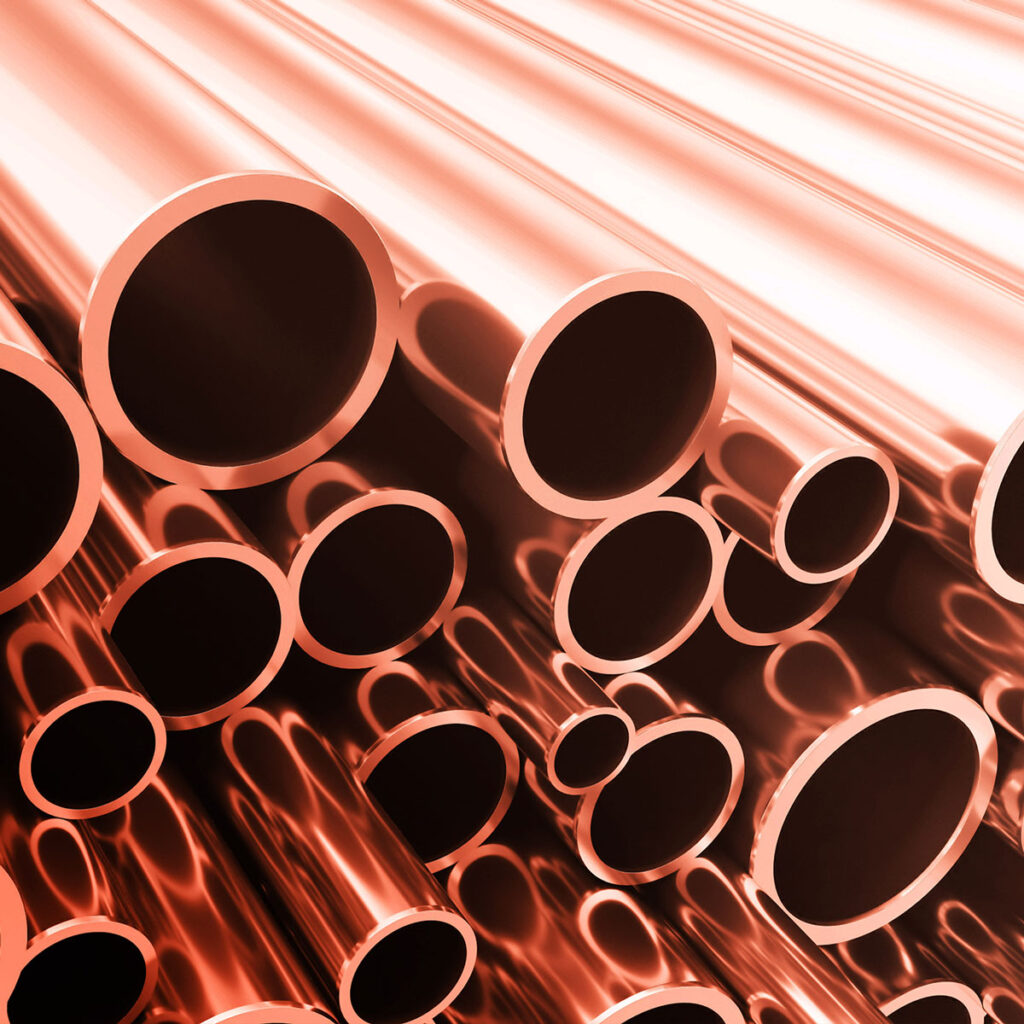Due to their extensive use, non-ferrous scrap metals are usually recycled.
Non-ferrous scrap metal is scrap metal other than iron and steel. The term non-ferrous simply indicates metals other than iron and alloys not containing an appreciable amount of iron. These items are non-magnetic.
Non-ferrous scrap metal includes aluminum, which includes foil and cans, copper, lead, zinc, nickel, titanium, cobalt, chromium, and precious metals. While the volume of non-ferrous scrap metal is less then ferrous scrap, it is more valuable by the pound then ferrous scrap metal.

Metal
Non-Ferrous Metal
Aluminum, copper and brass are the most commonly recycled non-ferrous metals, mostly because they’re often used in common consumer items.
As with recycling of any material, recycling of non-ferrous metals reduces the amount of space taken up in the nation’s landfills, which are closing in on their capacities at alarming rates. And in terms of energy consumption compared to mining virgin ore, the savings is considerable. For example, it takes 95 percent less energy to process recycled aluminum than it takes to mine and process it, and copper requires 90 percent less.

ALUMINUM
One of the most commonly used non-ferrous metals is aluminum. It’s also the most abundant metal in the earth’s crust, so it’s not surprising that it’s one of the most widely recycled materials today.

SILICON
Silicon metal, a crucial component in electronics and solar panel manufacturing, is renowned for its high melting point, conductivity, and ability to enhance the properties of alloys. As a cornerstone of modern technology, silicon metal plays a vital role in advancing innovation across various sectors.

BRASS
Brass contains 65% copper and 35% zinc and is a good electrical conductor and can be used in a wide variety of items such as musical instruments, doorknobs, plumbing fixtures, mailboxes and household ornaments.

LEAD
Lead is the heaviest common metal. Its uses are different than other non-ferrous metals, perhaps best known for use in protection against radiation (x-rays), it can also be found in, roof coverings and flashings as well as wheel and fishing weights.

ZINC
Zinc is the primary component of the hot-dip galvanized coating. This vital metal is abundant and—more importantly—infinitely recyclable. Great Northwest Recycling accepts zinc skimmings and draws from galvanizing. We also accept zinc ingots no matter the quantity, size or chemistry.

BRONZE
Bronze is an alloy consisting primarily of copper, commonly with about 12–12.5% tin and often with the addition of other metals (such as aluminum, manganese, nickel or zinc) and sometimes non-metals or metalloids such as arsenic, phosphorus or silicon.

Copper Wires
Copper wires, renowned for their excellent electrical conductivity and ductility, are essential in powering our modern world. From telecommunications to power distribution, copper wires enable efficient transmission of electricity, providing reliable connections in diverse applications.

Copper Granules
Copper granules, derived from the versatile metal copper, offer excellent conductivity, malleability, and corrosion resistance. Used extensively in electrical wiring, plumbing, and electronics, copper granules serve as the backbone for countless applications, ensuring efficient energy transmission and durable infrastructure.

Cupro-Nickel Scrap
Cupro-nickel scrap, a blend of copper and nickel alloys, boasts exceptional resistance to corrosion and erosion, making it ideal for marine applications, coinage, and heat exchangers. With its unique properties and durability, cupro-nickel scrap contributes to the longevity and efficiency of various industrial processes.
Non-Ferrous Metal
Environmental Benefits
Non-ferrous metals are used because of desirable properties such as low weight (e.g. aluminum), higher conductivity (e.g. copper), non-magnetic property or resistance to corrosion (e.g. zinc). Some non-ferrous materials are also used in the iron and steel industries.
Additionally the recovery of non-ferrous metals for recycling provides both environmental and economic benefits.
- Non-Ferrous Metal Recycling frees space.
- It creates a safer work environment.
- Metal Recycling results in less pollution, greater energy savings, and is overall more environmentally friendly.
- Non-Ferrous Metal Recycling creates additional employment opportunities.
- It provides additional materials for reuse in manufacturing.
- Metal Recycling is a source of revenue.
- Non-Ferrous Metal Recycling encourages the development of additional markets.
